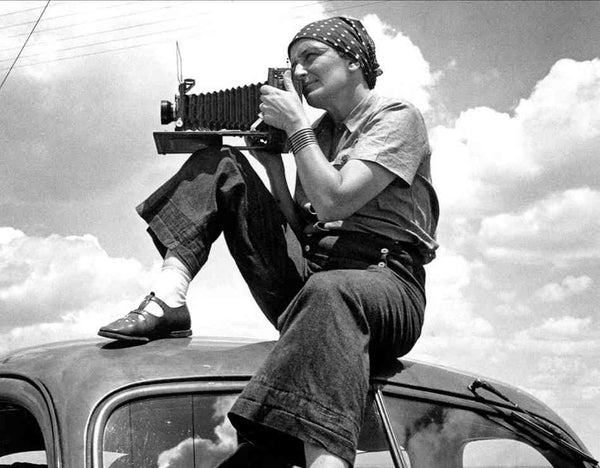This store requires javascript to be enabled for some features to work correctly.

Dorothea Lange
Dorothea Lange was an American photographer most famous for her photography of agricultural workers and their migration during the Great Depression. Her most famous photograph is the iconic, Migrant Mother, Nipomo, California (1936), which endures as the defining image of the era. In 1941 she was awarded a prestigious Guggenheim Fellowship, and this allowed her to take a series of photographs of religious groups in the USA, such as those of the Amish people.
From 1914 to 1917 she attended the New York Training School for Teachers and there decided to become a photographer, partly influenced by visits to the photographer Arnold Genthe. From 1917 to 1918 she attended a photography course run by Clarence H. White at Columbia University, NY. Lange moved to San Francisco in 1918, and in 1919 she set up a successful portrait studio where she took works such as Clayburgh Children, San Francisco. In the late 1920s she became dissatisfied with studio work and experimented with landscape and plant photography, although she found the results unsatisfactory.
With the Stock Market crash of 1929 Lange decided to look for subjects outside her studio. Turning to the effects of the economic decline she took photographs like General Strike, San Francisco. She had her first one-woman show at the Brockhurst Studio of Willard Van Dyke in Oakland, CA in 1934, and in the same year met the economist Paul Schuster Taylor, under whom she worked for the California State Emergency Relief Administration in 1935.
Later in 1935 she transferred to the Resettlement Administration, set up to deal with the problem of the migration of agricultural workers. She continued to work for this body, through its various transformations (including its time as the Farm Security Administration), until 1942. In 1939, in collaboration with Taylor, who provided the text, she published An American Exodus, of her portraits of migrant workers. In 1942 she worked for the War Relocation Authority and from 1943 to 1945 for the Office of War Information in San Francisco. Illness prevented her working from 1945 to 1951, after which she produced photographs of the Mormons and of rural life in Ireland for articles in Life in 1954 and 1955. In the late 1950's and early 1960s she worked with Taylor in East Asia, South America, Egypt, and the Middle East.
-Oxford University Press



